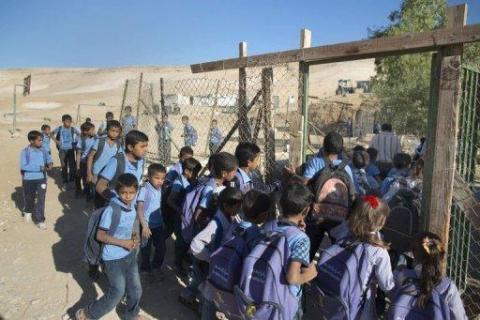The education gap: not a mistake, but policy
Treating inequality in education as a secondary problem is yet another symptom of the deliberate weakening of public education in favor of semi-private systems, which rely on public infrastructure but serve a select group of students. Publicly, all education ministers and senior ministry officials say they want to strengthen public education. In practice, they do the opposite.
Public education means, first and foremost, equality of educational opportunity. It is judged, inter alia, by its ability to enable every student to realize his potential, regardless of his socioeconomic background.
Just how hypocritical the Education Ministry’s public commitment to such equality is can be seen in its treatment of two special schools in Tel Aviv. In early 2011, Haaretz revealed that the city’s arts and science schools, which are supposed to serve students from all over the country, had for years been administering entrance exams to would-be first-graders, in violation of ministry regulations. In response, the ministry demanded that the schools and the Tel Aviv municipality devise a new method of selecting students.
Almost three years later, however, these schools are still breaking the rules. Is the ministry’s lenient treatment of them connected to the fact that almost all their students — fully 117 out of 120 second-, fifth- and eighth-graders, according to data from the national assessment tests administered in those grades — come from the highest socioeconomic backgrounds?
But those two schools are just one example of the growing inequality of educational opportunity. Many other schools have special classes where the criterion for admission is strictly economic: An extra NIS 1,000 per month buys benefits such as smaller classes and extra teaching hours. Senior ministry officials said this week that nobody knows how many such classes there are, because nobody has bothered to look into or regulate the issue. This constitutes deliberately turning a blind eye.
In the years before he was elected to the Knesset, current Education Minister Shay Piron headed the educational association Hakol Hinuch. In that capacity, he frequently assailed the ministry for not doing more to reduce educational gaps. But recently, both at a conference for principals before the school year opened and in media interviews, he has stressed other issues instead, including reducing the number of subjects studied and improving digital learning. The issue of inequality has been pushed to the sidelines. One can only imagine what might have happened had he made it a top priority.
The principals love Piron. After four years in which the ministry emphasized testing and values imposed from on high, they feel that finally a minister is talking about “education” again.
Nevertheless, there’s a danger that such talk can turn into empty clichés. And there’s another danger as well: the enormous gap between Piron’s urging that teachers dream about new educational possibilities and the educational reality in which they work. This reality is often determined by such marginal issues as poor teacher training, overcrowded classrooms and inadequate guidance for new teachers.
“I’m happy they’re telling me to dream,” said the principal of one southern elementary school. “But first I need to make sure my students don’t arrive from home hungry.”
From this perspective, all Piron’s talk of “significant learning,” as he calls his new program, is liable to be relevant mainly for the rich if it isn’t accompanied by a war on educational gaps.
Or Kashti

